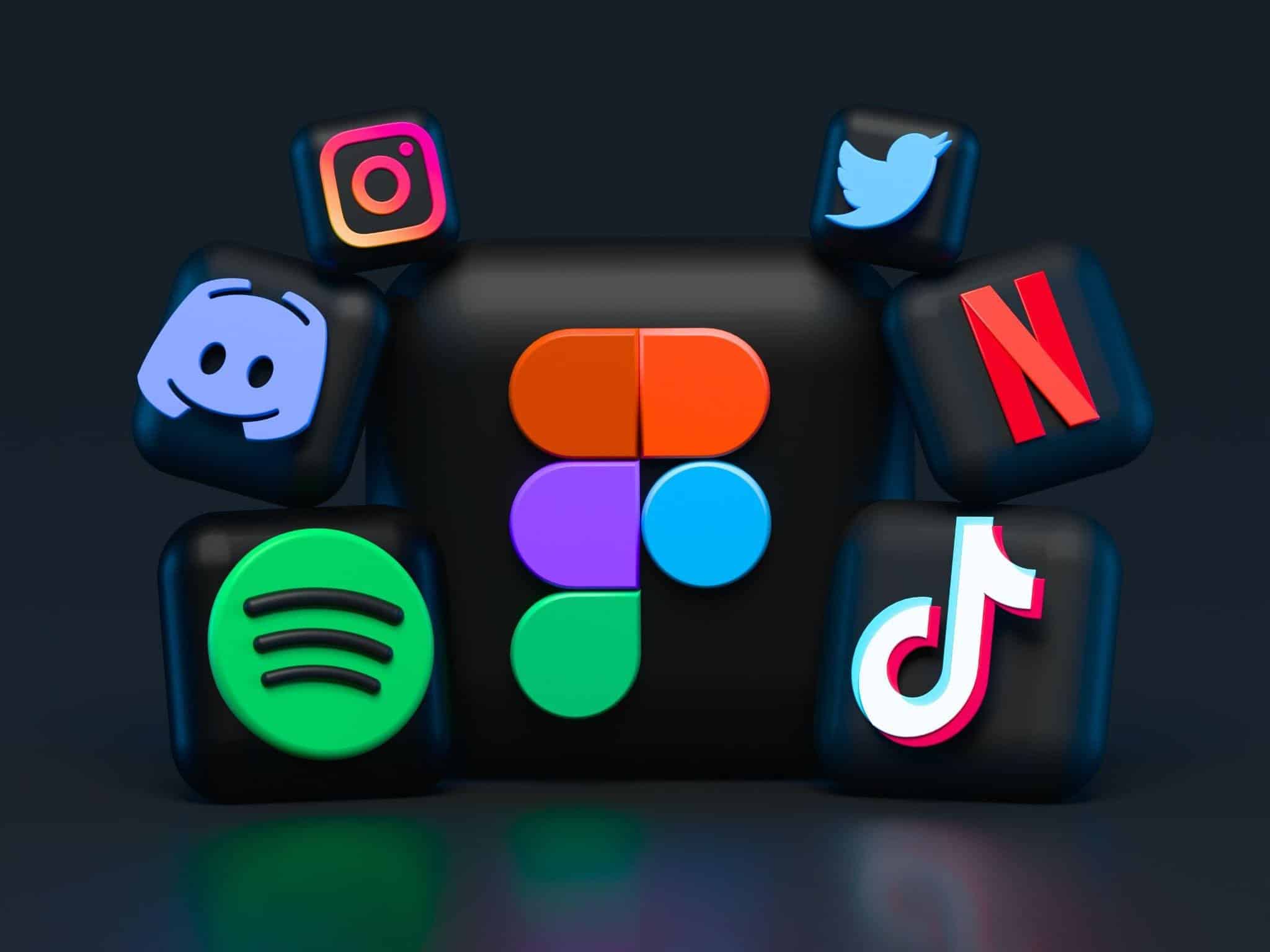Social media’s influence on a person’s purchasing decisions has never been stronger. Some experts say that it is the # 1 influencer in today’s marketing mix. But with so many options to choose from, it can be difficult to decide which social media platform will work best for your business.
For example, Tiktok is the most popular social media app among teens nowadays, but will those numbers convert to sales? Facebook is betting on Metaverse for its future, but user growth has stalled and its stock price has plummeted over 50% since launching its new name, Meta. Internet companies react so quickly to trends, so you have to be updated constantly.

Social media marketing is relatively cheaper, more targeted, and easier to track than any other marketing strategy. It’s worth pitching to clients that a social media presence is an absolute must in this day and age.
Why is it important to have Social Media Advertising?
Social media is one of the fastest-growing marketing tools on the planet. According to experts, social media has more than 4.26 billion million users worldwide in 2021 and will grow to 5.89 billion in 2027.
Social media’s influence is further showcased by data that shows that 54% of social media users use the platforms to research, compare, and evaluate purchase decisions for products. This makes social media the top influencer platform to date, beating out all other forms of media. This amount of trust and dependency on information is vital to any advertising campaign.
With all that traffic, it’s no surprise that people are spending lots of money to get their content seen. The question is: Will social media advertising get me the results I need? The answer is yes, but you need to know how to do it right. This article will show you how to make the most of your social media advertising dollars and up your digital marketing strategy game.
Types of Social Media Advertising
There are lots of ways to advertise on Social Media. Some are more effective than others, depending on several factors. Here are the main types of Social Media ads so far:
Image
Image ads are usually the most common of them all. They are visually static representations of your advertising campaign and are designed carefully to engage potential customers. Some have a call-to-action button that is clickable and will directly send you to the product or service page. These types of ads are popular and the most common on all social media platforms.
Video
Video ads are much more appealing than static images. They usually cost more to produce but are more likely to garner interest. These will cost more to create most times but video formats are the future and short-form videos are extremely popular in 2022. These are popular on video platforms such as Youtube, Facebook, TikTok, Snapchat, and Instagram. You can run video ads on almost all social media platforms, but those five companies are the most known for them.
Stories
Stories are very similar to video ads that are presented in a more organic, raw, and genuine fashion. These are designed to give the feeling of authenticity which appeals to the “reality show” generation who give more weight to relatability than the over-produced ads we’re used to watching on legacy media. Still, call-to-action buttons or links can be found in such ads, similar to video and image ads.
People nowadays still don’t mind being sold something, just do it discreetly. These types of ads are most popular on Facebook, Tiktok, Youtube, Snapchat, Linkedin, and Instagram. These types of social media ads aren’t found on most social media platforms.
Messenger
Messenger ads are located in your chat and are usually images that contain a link to a product or service. Unlike news feeds, these are mostly targeted to your current interests and feel like a more personalized ad. These are usually common in messenger apps (hence the name) which almost every type of social media platform has.
Tips for managing a realistic social media advertising budget
Now if you’re still looking to spend a reasonable amount of money on social media advertising to maximize your return, here are five ways to set a realistic budget that will yield results. Social media marketing isn’t a one-size-fits-all strategy.
Compute Social Media Campaign ROI
How do you calculate the return on your marketing investment? Social media ROI means different things to different people. Return on investment (ROI) is a direct result of a social media marketing campaign. We will look at some of the most common ways to measure the effectiveness of your social media marketing campaigns.
Set clear goals on how to measure success
Be realistic, but don’t be shy about setting measurable goals. The goal should be to get the desired result by a specific time and date. The focus should be on the things that are important to you and your business.
- Clicks – Conversions on users clicking your buttons and links.
- Views – Viewership metrics and impressions.
- Organic likes – Likes by users.
- Engagements – Comments, likes, shares.
- Sentiment – Overall feedback from engagements.
- Reach – Does your ad get to as many targeted users?
Determine what platform(s) suit your product or service

Photo by Alexander Shatov on Unsplash
Every social media platform has its own pre-dominant age demographic of users. Knowing who your target audience is helps spread your message to the right people. Here are the most popular social media platforms linked to some basic demographics.
- Tiktok – Short form video sharing, predominantly used by youths of today
- Facebook – Multifaceted social media platform now mostly used by mostly adults
- Youtube – The most popular video-sharing platform used by all age groups
- Instagram – Image, video, and stories sharing platform
- Snapchat – Image, video, and stories used by young adults
- Twitter – Microblogging platform used for entertainment and personalities
- Reddit – Community-driven forum platform used according to interest
- Pinterest – Image sharing platform used by both hobbyists and creatives
- Linkedin – Social media similar to Facebook with a focus on professionals and businesses
Devise a clear budget strategy

If you have already defined the budget analysis, then you are halfway there. Once you know what you can spend, you need to decide how to use it. Here are three simple types of budgets.
Basic types of budgets:
- Traditional – The simplest, most rigid way to construct a budget. Once you’ve allocated and put funds in certain areas. You’re no longer able to add more to it. This gets quite restricted in marketing where trends come and go so quickly that being versatile is a must. However, this type of budget strategy does give you the most control which is helpful in some situations.
- Flexible – This budget management style is more versatile and can adapt to sudden changes in outcomes where adjustments need to be made. With this style, you are allowed liberties to move funds around depending on what category needs as long as others have some to spare. This is more of an “as-per-need basis”.
- Zero Budget – This is more like a combination of both methods. All segments of the campaign start with nothing at the start of the budget planning cycle. However, there aren’t any hard caps set and funds are infused when needed.
Things to consider:
- Are your target audiences consumers (B2C) or businesses (B2B)?
If it’s B2C, you need a marketing mix that’s built for conversion. But if it’s B2B, you need to focus on lead generation, which requires a different set of tactics. There are two schools of thought when it comes to marketing: You either want to make money or you want to build relationships. Some people will tell you that you can’t do both. This is simply not true. It’s possible to do both. It just takes a different approach.
What % of your total advertising budget to spend on Social Media
On average, social media advertising accounts for 3% of a company’s total advertising budget.
However, some industries advertise up to 20% of their budget on social media platforms. Note that ad revenue is sometimes shared with social media platforms, where advertisers pay for reach and engagement.
Most experts agree that a small business should start with a small budget and then use the results to determine whether to increase or decrease spending. The amount of time and money you spend will depend on your budget.
What tools and software to use

Photo by iyus sugiharto on Unsplash
It is easier to manage your social media following, your messages, and your notifications with these tools. Scheduling and setting up content for your social media channels is the responsibility of the social media marketing managers.
You can use that information to create new posts, as well as see what posts have received more engagement. There is a feature that tracks brand mentions, as well as keywords. If you are just starting with a brand, they will show you how to use social media to your advantage. All of it is visible in a single dashboard. Nobody has time to check the likes, comments, and messages on all of the channels.
Set up a content calendar

Photo by Gaining Visuals on Unsplash
It helps you to stay focused on long-term strategy instead of focusing on quick wins. It’s important to identify the type of content and when it needs to be posted, by organizing the content framework of a content calendar.
Make sure to include everything in your content calendar. Plan your content on all the platforms in mind so you can present your content differently to fit those platforms’ audiences.
Gather data on each of your social media accounts, including engagement, to understand which platforms are performing the best and where there are opportunities to improve. It’s important to know which types of content work best for your audience on each platform.
You’ll need to make sure you post at the right time on the right platform to best reach your target audience. The findings from your audits will allow you to begin putting together your content calendar.
Focus on engaging content creation

It has been proven that an active and engaging community is a key factor in the success of your business, so it is very important to invest in quality content creation.
More Engaged Customers The more content you create, the more engagement you will get from your customers. People love to share the stuff they like. So if you have some interesting posts, they are more likely to share them with their friends and followers, giving your ad a broader reach.
Organic vs paid social media
Organic ads are free and are the best thing about social media advertising. Creating engaging and shareable content should be a priority in any social media advertising campaign. However, there are downsides to this, organic social media ads take a lot of data analysis and are unpredictable.
Paid social media’s only downside is that you pay for them, but it is faster to reach and possibly convert than organic ads.
Influencer Marketing

With the rise of digital platforms and social media, influencer marketing has become an important part of a company’s overall marketing strategy. An influencer is someone with a large following or a lot of influence on that audience.
They are often used to promote products or services as part of their job. Their social media presence, including their followers and engagement levels, will help you reach your target audience and increase brand awareness. You can also use influencers to give you insight into your target audience.
This is called influencer research and it’s a great way to get more information about your consumers. When you think of influencer marketing, you might immediately think of celebrities. But influencers come in all shapes and sizes, including bloggers, small business owners, and regular people.
A study by the Content Marketing Institute (CMI) found that 75% of B2B marketers plan to increase their influencer marketing budgets this year. You may be wondering: How can I use influencers to increase my brand awareness?
Summary of Social Media Advertising Budget
When we look at social media advertising from a practical perspective, it’s obvious that if you don’t have enough money to buy a whole bunch of ads, then there is absolutely no point in trying. You are wasting your money and time.
The real key to effective social media marketing is to spend as much money as possible on the ads that work for you, and only the ads that work for you. Don’t waste time or money on the ones that do not work.
In addition to setting up your budget properly, you also need to use a method that is easy to monitor and keep track of, so you can make sure that you’re getting results.

